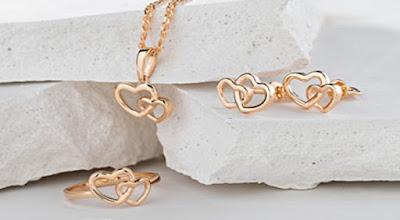Determining the Authenticity of Gold: What do you mean by 916 Gold?
Gold, for all its worth and rarity, is
a readily tampered with product. Gold purity is easily manipulated and may
be overlooked. As a result, gold authenticity is defined as a set of
standards to make it easier to distinguish the purest gold from contaminated
gold.
What exactly is 916 gold? Why is
it so well-liked? What distinguishes 916 gold from other precious metals? What
is the difference between 22K and 24K gold? What is the difference between BIS
and hallmarked gold? These are some of the most frequently asked questions by
gold buyers. A buyer must be familiar with popular phrases and characteristics
of gold fineness.
What exactly
is 916 gold?
When searching to acquire gold, the
phrase "916 gold" is frequently heard. So, what exactly is gold 916? What
exactly does that figure mean? It simply refers to the amount of gold in the
alloy used to create gold jewellery or currencies. 916
KDM means that the alloy contains 91.6 per cent pure gold.
What is the
distinction between gold 916 and gold 22 karat?
There is no distinction. They're both
similar. The 916 gold is termed 22 karats because it has 91.6 grammes of pure
24-carat gold in every 100 grammes of alloy (22 by 24 in per cent is 91.6 per
cent).
Since gold is a delicate metal with
minimal malleability and durability, 22K gold is considered the optimal
proportion in gold jewellery creation.
24K gold is the finest, but it is
extremely delicate to be used in jewellery. While purchasing gold is considered
as an investment, however, the optimum grade is 24K. Even though, purest
metals would have a little level of impurities, as well as the purest gold can
only be 999.9 bits per thousand pure.
18K gold would be 750 gold, 23K gold
would be 958 gold, and 14K gold would be 585 gold under this purity assumption.
What does the
term hallmarking means?
The procedure of confirming the
quality and cleanliness of gold is known as hallmarking. The Bureau of Indian
Standards is in charge of gold and silver hallmarking (BIS). As a result, a BIS
hallmarked gold ring, piece, or currency complies with the BIS's set of
requirements.
Standards of
Purity
Gold is a complex metal, and clients
can readily be duped into paying more for low purity gold. As a result, the
administration requires only hallmarked gold to be sold. Customers, on the
other hand, must be aware of the requirements for determining gold purity.
When acquiring gold jewellery, you
should look for the BIS mark, karat pureness and fineness (if it is 14K, 18K,
22K, or 24K), the hallmarking centre, and the jeweller's proof of identity.
Karat purity
and fineness
The purity of gold is determined by
the karat and fineness numbers. The purest kind of gold, measured in Karats, is
24 KT. However, 22K gold is the greatest purity used in jewellery production
because 24K gold is too soft to manufacture fine details. When silver, zinc, or
other metals are alloyed with gold to make ornaments, the proportion of gold
involved changes, as does the purification and refinement.
The
mark/number of the assaying and hallmarking centre
Only BIS-licensed laboratories are
allowed to test the purity of gold jewellery. To be hallmarked, the lab's logo
or licence number is additionally imprinted on the jewellery.
Identifying
mark of a goldsmith
For a gold piece to be termed hallmarked, the gold accessories store or manufacturer must additionally place their authentication mark on it.



Comments
Post a Comment